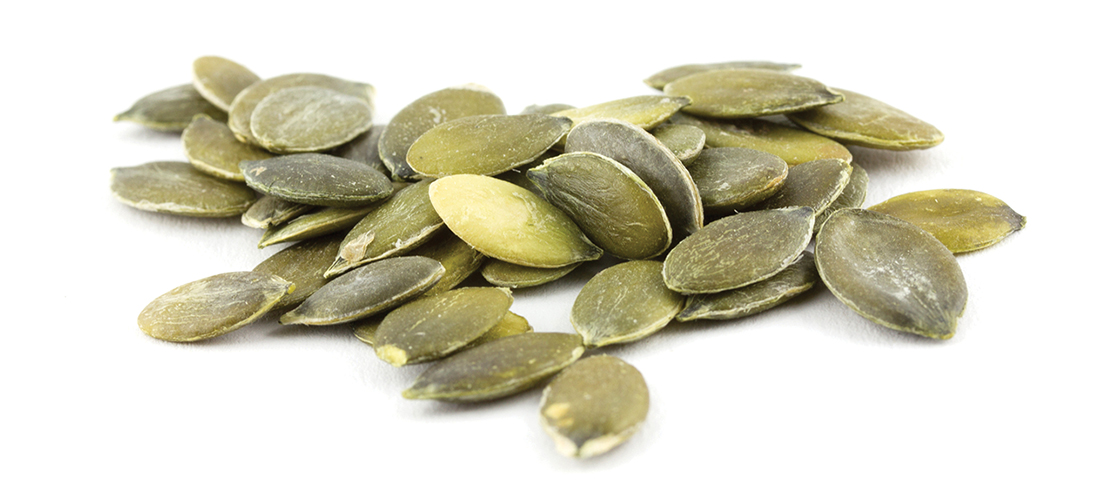
The Great Pumpkin Seed
By Karen Frye
October is the month for the pumpkin harvest in the Sandhills, but by late summer, you begin to find them in the farmers markets and roadside stands. Some are ornamental pumpkins used to decorate for the fall season, and some are edible pumpkins for pies, breads and seeds. Pumpkin is a member of the squash family and while the flesh has many health benefits, the seeds are the real powerhouse of nutrients.
Pumpkin seeds, also known as “pepitas,” are flat, dark green and football shaped. They have a chewy texture, and a subtle, sweet, nutty flavor. The use of the seeds for the nutritional value and medicinal benefits dates back to the Native Americans. A few of the nutritional highlights are the minerals magnesium, iron, copper, manganese and zinc. The seeds are also rich in vitamins A, B1, B2, B3, protein, good fats and phytosterols, particularly beta-sitosterol.
Natural medicine has used pumpkin seeds in the treatment of prostate conditions. Zinc and beta-sistosterol are important nutrients that can help reduce BPH (benign prostatic hyperplasia). Beta-sistosterol is also highly beneficial in reducing cholesterol. Other ailments that improve with eating the seeds are nausea, motion sickness and parasites.
If you haven’t explored adding these nutritious seeds to your diet, now is the time. To ensure your seeds are as fresh as possible (and don’t contain any moisture), store them in an airtight container in the refrigerator. It’s best to eat them within two months but they will be OK for up to six. Always check for any musky smell, an indication the seeds have gone rancid. Of course, the freshest seeds are right out of the pumpkin. Clean the pumpkin flesh off the seeds, then let them dry by spreading them out for a few days exposed to the air.
The seeds are delicious raw or soaked overnight in a bit of water. One-third cup of seeds contains 90 calories, 4 grams of fat, 4 grams of protein, and 11 grams of carbohydrates. Roasting the seeds is easy and brings more depth of flavor, especially if you are using them in a salad or to top baked bread.
To roast them, spread the seeds on a baking sheet or cast iron skillet. Drizzle a little oil over them if you’d like. Bake in a 300-degree oven for about 30 minutes till golden brown. Shake the pan often to prevent burning. For spicy pumpkin seeds, add 1 teaspoon of ground cinnamon, 1/2 teaspoon of ground cloves and 1/2 teaspoon nutmeg to 3 cups of seeds. If you want them salty, add a little Celtic salt. If you want a little zing, add a pinch of cayenne pepper. Follow the baking instructions.
Other pumpkin seed ideas:
Add to sautéed carrots, broccoli and onions.
Sprinkle liberally over a salad for extra crunch.
Add crushed seeds to hot cereal.
Add to your meat or veggie burger for a delicious, nutritious treat.
Make a new habit of munching on pumpkin seeds instead of chips or pretzels. They are easy travel companions, too. Delicious, nutritious and good for the whole family, even your pets. PS
Karen Frye is the owner and founder of Nature’s Own and teaches yoga at the Bikram Yoga Studio.





